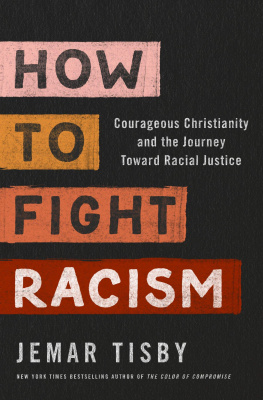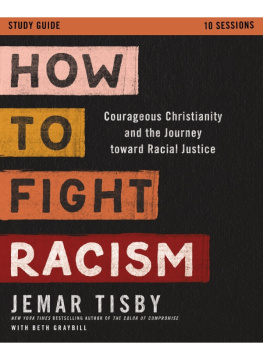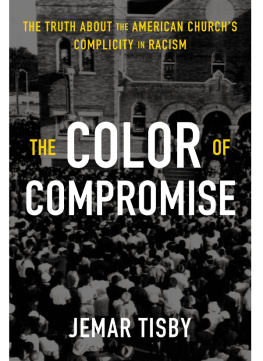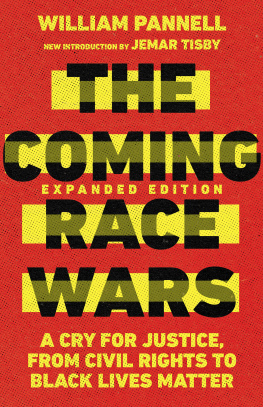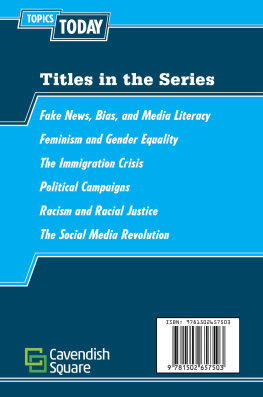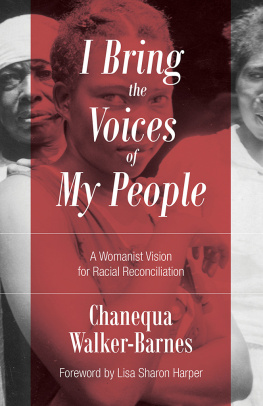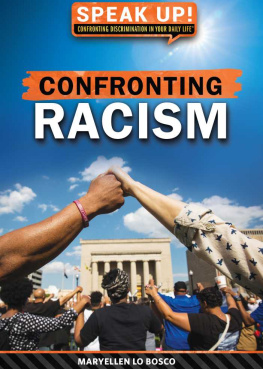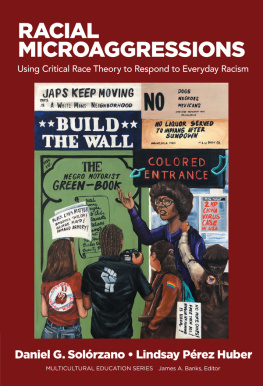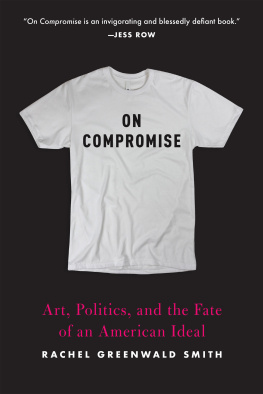ZONDERVAN REFLECTIVE
The Color of Compromise Study Guide
Copyright 2020 by Jemar Tisby
Requests for information should be addressed to:
Zondervan, 3900 Sparks Dr. SE, Grand Rapids, Michigan 49546
Zondervan titles may be purchased in bulk for educational, business, fundraising, or sales promotional use. For information, please email SpecialMarkets@Zondervan.com.
ePub Edition October 2020 : ISBN 978-0-310-11484-0
All Scripture quotations, unless otherwise indicated, are taken from The Holy Bible, New International Version, NIV. Copyright 1973, 1978, 1984, 2011 by Biblica, Inc . Used by permission of Zondervan. All rights reserved worldwide. www.Zondervan.com. The NIV and New International Version are trademarks registered in the United States Patent and Trademark Office by Biblica, Inc .
Any internet addresses (websites, blogs, etc.) and telephone numbers in this book are offered as a resource. They are not intended in any way to be or imply an endorsement by Zondervan, nor does Zondervan vouch for the content of these sites and numbers for the life of this book.
All rights reserved. No part of this publication may be reproduced, stored in a retrieval system, or transmitted in any form or by any meanselectronic, mechanical, photocopy, recording, or any otherexcept for brief quotations in printed reviews, without the prior permission of the publisher.
Cover design: RAM Creative
Cover photo: Everett Collection Historical / Alamy Stock Photo
Interior Design: Kait Lamphere
20 21 22 23 24 25 26 27 28 29 30 31 32 /LSC/ 17 16 15 14 13 12 11 10 9 8 7 6 5 4 3 2 1
Information about External Hyperlinks in this ebook
Please note that footnotes in this ebook may contain hyperlinks to external websites as part of bibliographic citations. These hyperlinks have not been activated by the publisher, who cannot verify the accuracy of these links beyond the date of publication.
In this ebook edition, please use your devices note-taking function to record your thoughts wherever you see the bracketed instructions [Your Notes] or [Your Response Here]. Use your devices highlighting function to record your response whenever you are asked to checkmark, circle, underline, or otherwise indicate your answer(s).
CONTENTS
Preface
A WORD FROM JEMAR TISBY
W elcome to The Color of Compromise Video Study! This study guide and the twelve video sessions are companion learning experiences to be used with my book The Color of Compromise: The Truth about the American Churchs Complicity in Racism. The book itself contains the results of my research into the chilling connections between the church and racism throughout American history as well as some of my personal thoughts about how Christians can pursue racial justice. The study explores how Christians have reinforced theories of racial superiority and inferiority and outlines the bold action needed to forge a future of equality and justice. Please note that, due to the nature of the subject, some of the sessions may have graphic content that some viewers may find disturbing.
This study guide and the accompanying video study are designed to help you dig deeper into the topic of racism through personal reflection and biblical engagement, either as an individual or with a group. The study is divided into eleven sessions that correspond to the chapters of the book. In most cases, you will want to read the chapter and watch the corresponding video session prior to working through the content of this study guide. Session twelve is the conclusion to the study and can be watched directly after session eleven.
The sessions can be arranged according to different schedules to fit your specific needs and goals. If you are working through the material as a group or in a class, you may want to cover one session each week over eleven meeting times. Alternatively, some groups may want to combine two sessions into one and work through more material each time they meet. For those who prefer to combine lessons, I recommend the following accelerated meeting schedule:
1. Uncomfortable Truths |
2. The Colonial Era and the American Revolution |
3. Slavery and the Civil War |
4. Jim Crow and Complicity in the North |
5. Civil Rights and the Religious Right |
6. Racial Reconciliation and the ARC of Racial Justice |
If you are doing this video study as an individual you can absorb the material as quickly or as slowly as you would like. What matters is that you engage in the content thoughtfully and intentionally.
My hope is that this study will equip you with a greater understanding of the history of the American churchs complicity in and, often, the open promotion of racism. I pray that you will be able to learn from the failures of our forebears and move from a complicit Christianity that compromises with racism to a courageous Christianity that boldly confronts it.
Jemar Tisby
The quotations (unless otherwise indicated) interspersed throughout this study guide and the introductory comments are excerpted from the book The Color of Compromise: The Truth about the American Churchs Complicity in Racism and the video study of the same name by Jemar Tisby. The questions in this study have been written by Tyler Burns in collaboration with Jemar Tisby.
SESSION
THE COLOR OF COMPROMISE
R acism is one of the most polarizing conversations in our world and in the church. So why should the church wade into this difficult topic? In , well make the case for The Color of Compromise.
INTRODUCTION
On September 15, 1963, four little girls Addie Mae Collins, Denise McNair, Carole Robertson, and Cynthia Wesley were brutally murdered in a bombing at the Sixteenth Street Baptist Church in Birmingham, Alabama. The vicious attack killed these four girls and injured at least twenty more people. This was one of many such attacks of intimidation and terror that marked a brutal period of the civil rights movement, a time of violent racial tragedy.
In response to this bombing, a lawyer named Charles Morgan Jr. stood in front of a group of his peers and asked this piercing question, Who did it? Who threw that bomb?... The answer should be, We all did it. Morgans question echoes today as we begin our study about racism in the history of the American church, and his quote reveals a key truth about what racial injustice and the history of racism in America needed to succeed: the compromise of Christianitys biblical and moral convictions. Jemar Tisby points out: History teaches that there can be no reconciliation without repentance. There can be no repentance without confession. There can be no confession without truth.
The Color of Compromise tells the truth about American churchs complicity in racism. The purpose of this study guide is to equip you with the truth so that you can share it with others. Together, we can work toward correcting the American churchs embarrassing legacy of complicity regarding systemic racism. This legacy of systemic racism has harmed the lives of ethnic minorities while also sullying the churchs witness to the world. Thats why it is important to tell the truth.
The truth, no matter how uncomfortable it may be, will set us free from the power of racial injustice. This study guide is designed to challenge everyone who seeks to engage the truth of racial injustice with honesty and hope. Honesty requires us to look back with accuracy. Hope requires us to look forward with anticipation. With honesty and hope, the American church can shift its shameful past of racial injustice into a future of racial healing.


